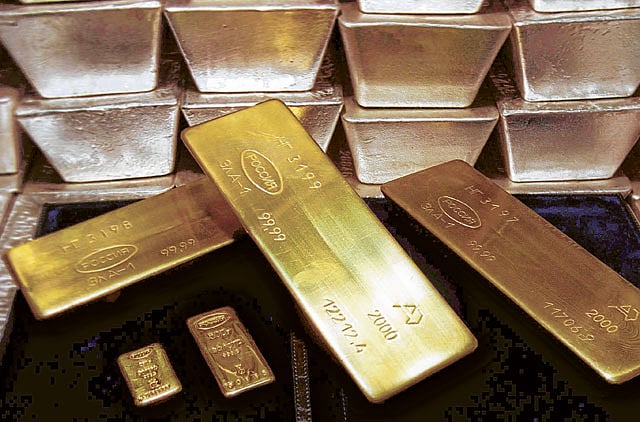All that glisters remains gold according to the statistics in the Gulf News benchmarks "commodity" section over both 52 weeks and five years. The chart-topping 5-year result of the Falcon Fund (237 per cent) raises questions.
The big question: the trend is it still our friend? And, if it is: how much more upward momentum is left in the trend?
One of the best places to go for such insight is the admittedly "conflicted" World Gold Council (WGC). The lead headline in their most recent report is the continued upward trend of gold prices during the third quarter of 2010. However, with other eye-catching trends going on at present, the real eye-brow-raisers for me were two other pieces of insight.
Low risk
In sight one: the "average" volatility of gold assets for the period measured is now 13.2 per cent. Given that the more stable equity markets fluctuate at around the 15 to 25 per cent range, then 13.2 per cent is fairly "low risk" for a performing asset. At 13-ish per cent "standard deviation" the risk-reward outlook is compelling; as the WGC imply: this risk statistic is more enticing than equities generally and other commodities.
Insight two: investors bought 28 tonnes of gold through ETFs (Exchange Traded Funds) in the third quarter. The WGC proceeds to mention funds such as the iShare Gold Trust (Amex market); and the Julius Baer Physical Gold Fund for "good performance" medals in the third quarter.
The emergence of ETFs as a distribution channel for gold investors is meaningful in that it allows investors to get into the asset on smaller amounts, which means more "retail" gold investing. Secondly, the ETFs largely follow the trend which takes out some of the risk from investing in specific gold stocks or gold mines or particular bits of jewellery. They are highly liquid. This all leads back to the question: is it sustainable? A resounding "yes' can be gleaned from the WGC. Let's look at the supply/demand reasons why.
Firstly, it's all about supply and demand in respect of the long term. There just isn't enough new gold coming out of the ground. Indeed, the WGC say that gold production is declining. This is why there are so many "gold stories" doing the rounds about tonnes of the stuff being left in a vault by Adolf Hitler, or a tin-pot dictator, or someone else who forgot to tell everybody. The supply part of the equation supports fraud stories.
Secondly, the WGC point to significant demand drivers. The biggest current driver is the general weakness of the US dollar together with general economic unease which can be nicely tied up into the QE (Quantitative Easing) box. On top of this however, and a related story, is the purchasing of gold by emerging market central banks. Now add in increasing demand for jewellery in line with China's growing middle class, and the increased use of gold in technology and industry, and that completes the demand side recipe.
Sustainable trend
Like all price surges, the big mistake is to buy high and sell on the fall. But who knows when the fall will occur? For such fears, the WGC place their faith in a sustainable medium to long term trend and not necessarily the continuation of the current short term trend.
The perspective is supported by the ongoing diminishing influence of jewellery demand as part of the demand side equation. In 2009, jewellery demand stood at around 52 per cent of the demand side equation having fallen from somewhere around 70 to 80 per cent in the previous decade. The 2010 statistics will continue this trend as central banks continue their purchasing; as investors (and their ETFs) continue with their appetite, and as the need for diversification out of the US dollar and equity markets continue.
The writer is chairman of Mondial Financial Partners.
Sign up for the Daily Briefing
Get the latest news and updates straight to your inbox
Network Links
GN StoreDownload our app
© Al Nisr Publishing LLC 2025. All rights reserved.
